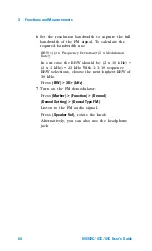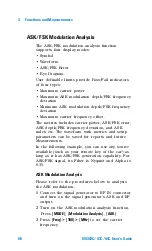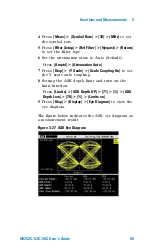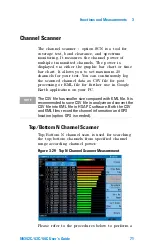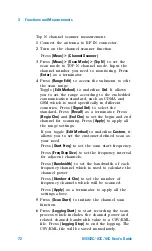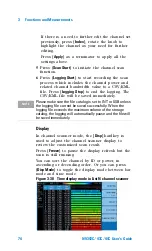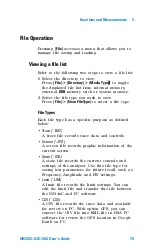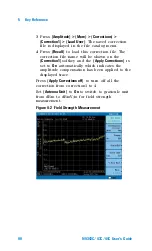
3
Functions and Measurements
78
N9342C/43C/44C User’s Guide
frequency domain reflectometry. The transmitted
and reflected signals contain information about the
distance to the faults. This information is used to
determine the physical distance to the faults. The
tester displays the physical distance to the
probable faults, corrected for cable loss and the
velocity propagation factor of the cable.
Perform a DTF measurement
To make a DTF- return loss measurement over a
frequency range of 50 to 400 MHz, perform the
following steps:
1
Press the
[MODE] > {Cable&Aetenna Test}>{Distantce
To Fault}
to select the DTF mode.
2
Press
[FREQ] > {Start} >
50 > [ENTER]
to set the
start frequency to 50 MHz.
3
Press
{Stop} > 400 > [ENTER]
to set the stop
frequency to 400 MHz.
4
Press
{Calibrate}
to bring up the calibration
process guidance. Follow the instructions to
perform a calibration. For more information
about calibration, refer to
5
Remove the calibrator and connect the cable
under test (DUT) to the RF OUT connector on
the top panel of the tester.
The DTF measurement starts and the results are
displayed on the screen. A peak in the horizontal
trace indicates a defective location.
Summary of Contents for N9342C
Page 1: ... Agilent N9342C 43C 44C Handheld Spectrum Analyzer User s Guide ...
Page 8: ......
Page 39: ...31 AgilentN9342C 43C 44C Handheld Spectrum Analyzer 3 Functions and Measurements ...
Page 92: ...3 Functions and Measurements 84 N9342C 43C 44C User s Guide ...
Page 156: ...5 Error Messages 148 N9342C 43C 44C User s Guide ...

